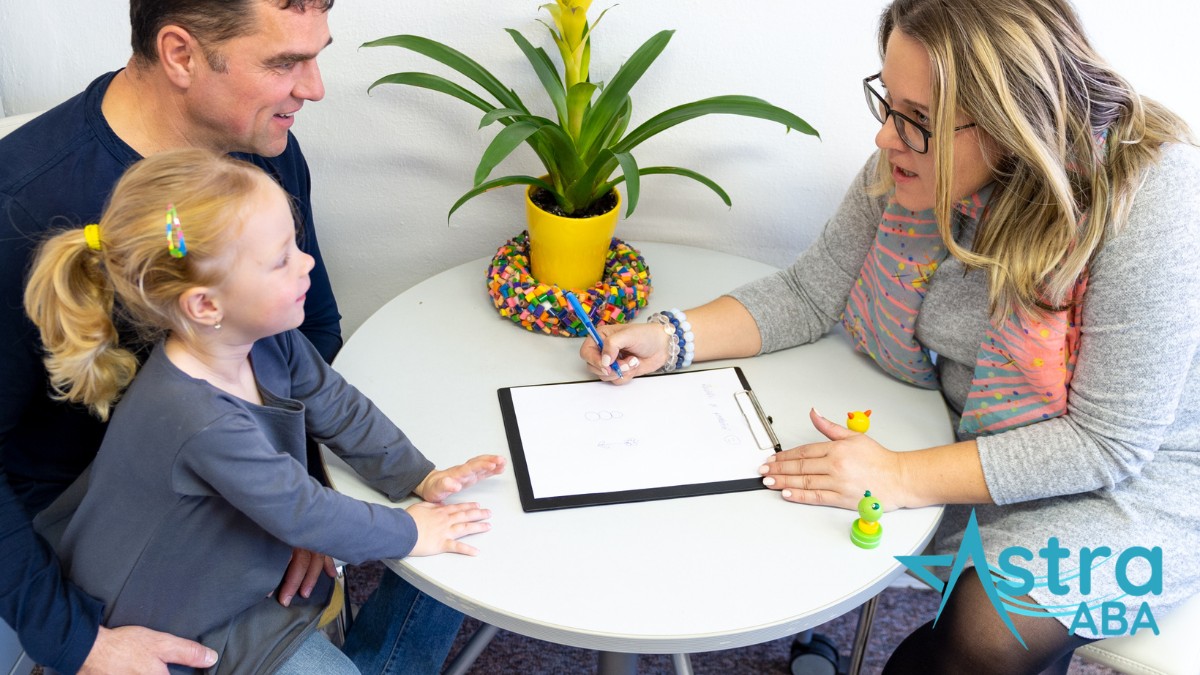Understanding Mild to Moderate Autism Levels
Explore mild to moderate autism: symptoms, levels, and challenges. Learn how they differ and how to offer appropriate support.
July 29, 2025
Key Points:
- Mild to moderate autism (autism level 1–2) involves noticeable social communication challenges and behavioral rigidity but allows for substantial independence with support.
- Early intervention and targeted therapies can significantly improve daily functioning and quality of life.
- Understanding these levels informs educational planning, therapy choices, and family strategies.
Many children with autism fall under what is considered "mild" or "moderate" on the spectrum, and understanding these distinctions is key to meeting their needs. According to the CDC, over 70% of autistic children do not have intellectual disabilities, which means many fall within levels 1 or 2—often navigating a mix of strengths and challenges that aren’t always immediately obvious. These children may be verbal, academically capable, or socially engaged, yet still require targeted support to thrive.
Recognizing the signs of mild to moderate autism helps families and educators create more effective environments and strategies. From managing transitions and sensory issues to building social and emotional skills, early and consistent intervention plays a crucial role.
In this article, we’ll explore the traits and needs of children at autism levels 1 and 2, along with the therapies, school supports, and daily tools that empower them to grow with confidence.
What is Mild to Moderate Autism?
Mild to moderate autism typically refers to autism level 1 and level 2 under current diagnostic guidelines, featuring challenges in social communication and restricted behaviors that require some support but still allow significant independence.
Level 1 (mild) often includes noticeable social awkwardness or rigid routines without serious daily impairment. Level 2 (moderate) involves more obvious struggles—such as limited conversation skills or frequent stress with change—that require regular support.
How Do Level 1 and Level 2 Differ?
Level 1 and Level 2 autism, as defined in the DSM-5, both fall under the broader diagnosis of Autism Spectrum Disorder but differ in the level of support required. Children with Level 1 autism may be verbal, show mild social difficulties, and require support mainly in complex social situations or when routines are disrupted. They often manage daily tasks with minimal assistance, but may struggle with flexibility, reading social cues, or shifting attention between tasks.
Level 2 autism involves more visible and consistent challenges that impact daily life. Children at this level may have limited speech, display repetitive behaviors, and show marked difficulty adapting to changes in routine or environment.
They typically need more hands-on support across school, home, and community settings. Understanding this distinction is important for developing realistic goals, choosing appropriate therapies, and advocating for school accommodations that align with each child’s specific needs.
What Social-Communication Challenges Occur?
Children with mild to moderate autism often face social-communication challenges that can impact their ability to connect with peers and navigate everyday interactions. These difficulties may include trouble understanding social cues like facial expressions, tone of voice, or body language.
Many children also struggle with conversational turn-taking, making eye contact, or adjusting their language based on the listener’s needs or the social setting. In classroom and peer environments, these challenges can lead to misunderstandings, isolation, or frustration.
Some children may appear overly blunt, avoidant, or uninterested—not because they lack care, but because social interpretation and response require cognitive effort. With consistent support such as social scripts, emotion coaching, or targeted speech therapy, children can improve these skills over time and build stronger, more confident connections.
What Behavioral Patterns Are Common?
Restricted or repetitive behaviors often accompany autism at these levels, though they vary in intensity. Mild cases may show strong preferences for routine, insist on sameness, or engage in subtle stimming (like fidgeting or repeating phrases). Moderate cases may display more obvious repetitive behaviors (hand flapping, spinning) and resist any change to their environment or schedule.
Special interests—often intense—can be strengths when channeled positively or challenges if they hinder flexibility. By recognizing and managing these patterns, families can reduce daily stress and enhance meaningful engagement.
What are Academic and Learning Implications?
Children with mild to moderate autism and age-appropriate language may perform well academically—especially in structured subjects like math or reading—but still face unique challenges, including:
- Difficulty with open-ended assignments or group projects
- Trouble following multi-step instructions
- Struggles with staying organized or transitioning between tasks
School-based strategies can include visual schedules, breaking assignments into smaller steps, explicit teaching of social rules, and occasional 1:1 support. With help, many thrive in general education settings.
What Emotional and Mental Health Support Is Needed?
An autism diagnosis at mild or moderate levels often includes sensory sensitivities and anxiety related to social or environmental unpredictability. Emotional support should include:
- Explicit teaching of self-regulation strategies, like deep breathing or breaks
- Acknowledgement of sensory triggers (noise, crowds, textures) and help adapting environments
- Coaching in recognizing and naming emotions—both in self and others
These supports prevent anxiety from escalating and improve resilience over time.

How Can Families Create Effective Routines?
Creating effective routines is especially helpful for children with mild to moderate autism, as predictability provides a sense of security and reduces anxiety. Families can support this by using visual schedules that outline daily activities, offering verbal countdowns before transitions, and maintaining consistent wake-up, meal, and bedtime routines.
Including calming elements, such as a designated quiet space or preferred sensory tools, further supports emotional regulation. When routines are clearly communicated and thoughtfully adapted, children are more likely to feel empowered, cooperative, and confident in navigating their day.
What Therapies Help Mild to Moderate Autism?
Evidence supports several approaches tailored to these levels of autism. These strategies help children understand what to expect, which can ease stress and reduce behavioral resistance. Flexibility within structure is also key. Allowing small choices—like picking between two snacks or choosing the order of activities—builds independence while still honoring routine.
Common supports include:
- Applied Behavior Analysis (ABA): Focuses on social, communication, and flexibility skills through structured reinforcement.
- Speech-language therapy: Enhances pragmatic language, conversational skills, and tone modulation.
- Occupational therapy: Addresses sensory integration, motor coordination, and self-regulation strategies.
- Social skills groups: Provide peer interaction practice in supervised, structured settings.
Combining approaches based on your child’s developmental profile yields the best outcomes.
What Role Does ABA Play in Mild to Moderate Autism?
Applied Behavior Analysis (ABA) plays a significant role in supporting children with mild to moderate autism by targeting specific skills through structured, evidence-based methods. For children at these levels, ABA can help improve communication, enhance social interaction, and increase flexibility in routines.
Therapists use positive reinforcement to encourage desired behaviors and systematically teach coping strategies that reduce anxiety and frustration. ABA is especially effective because it’s personalized.
For a child with level 1 autism, it might focus on subtle social cues or conversational turn-taking, while a level 2 child may benefit from support with transitions or reducing repetitive behaviors. Sessions often include real-world practice—at home, school, or community settings—which helps ensure that progress is meaningful and sustainable across environments.
Get the Right Support With Personalized ABA Therapy
Children with mild to moderate autism can flourish with evidence-based support that builds social flexibility, communication, self-regulation, and independence. ABA therapy is a powerful tool in this process.
Astra ABA provides individualized ABA therapy in North Carolina, Indiana, and Kansas, working with families to create compassionate, structured programs that help children develop at their own pace.
Reach out to us to learn how our family-focused ABA services can support your child’s growth and help them thrive in school, relationships, and daily life.
Related Content
Liked this article? Check out these related posts to learn even more!






Ready to start your journey with ASTRA ABA?
Contact us today for a consultation and let us be a part of your child's path to success.
Get In Touch



.png)









